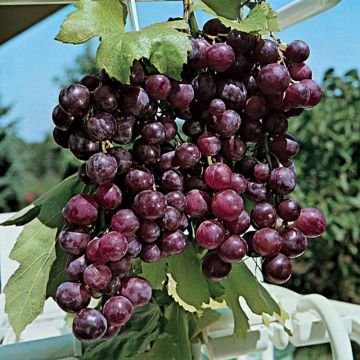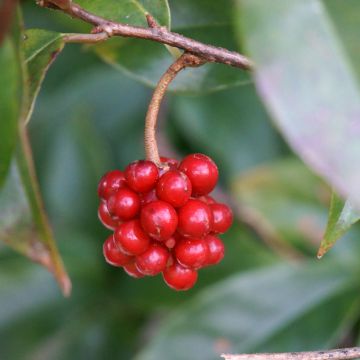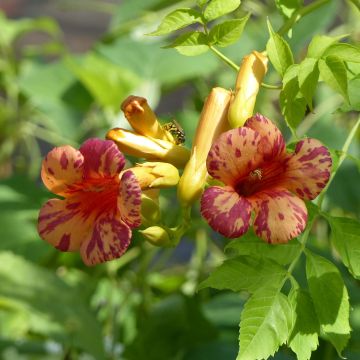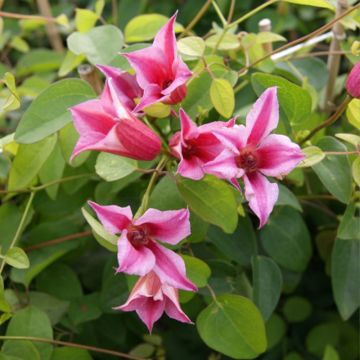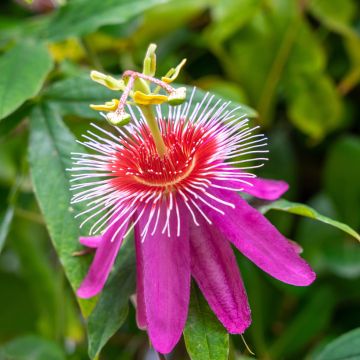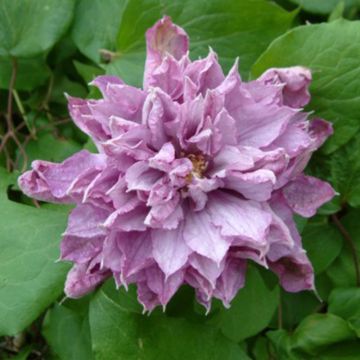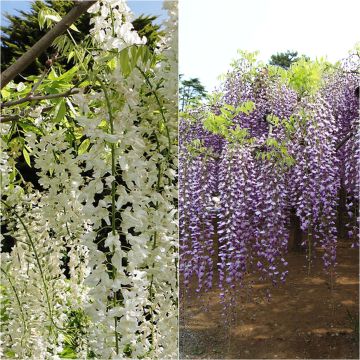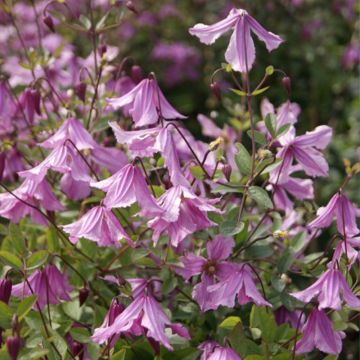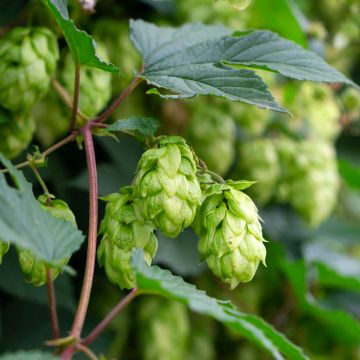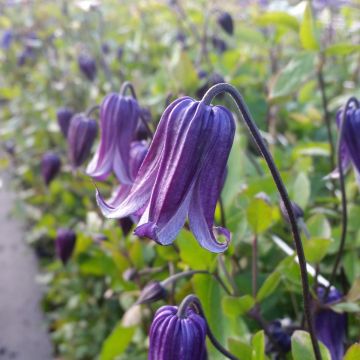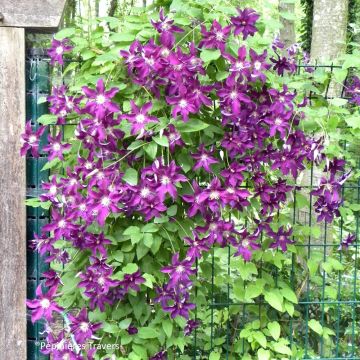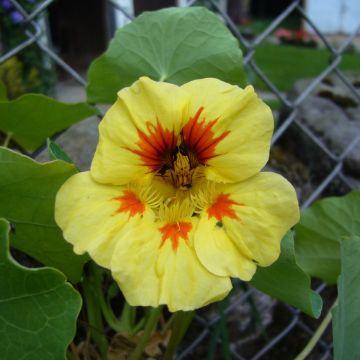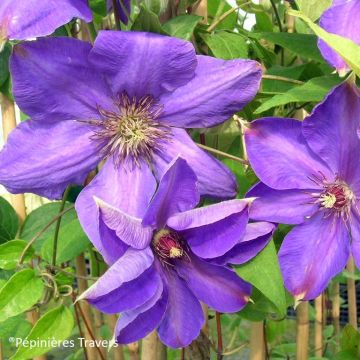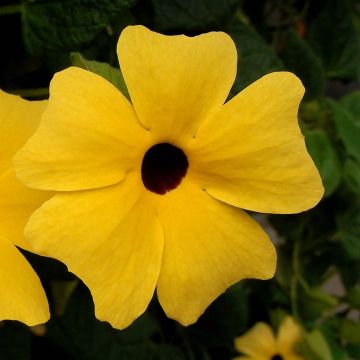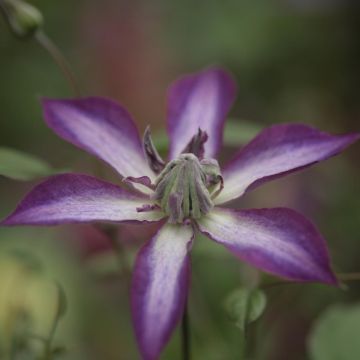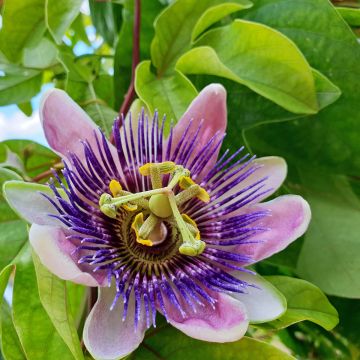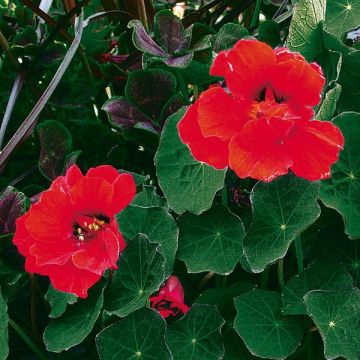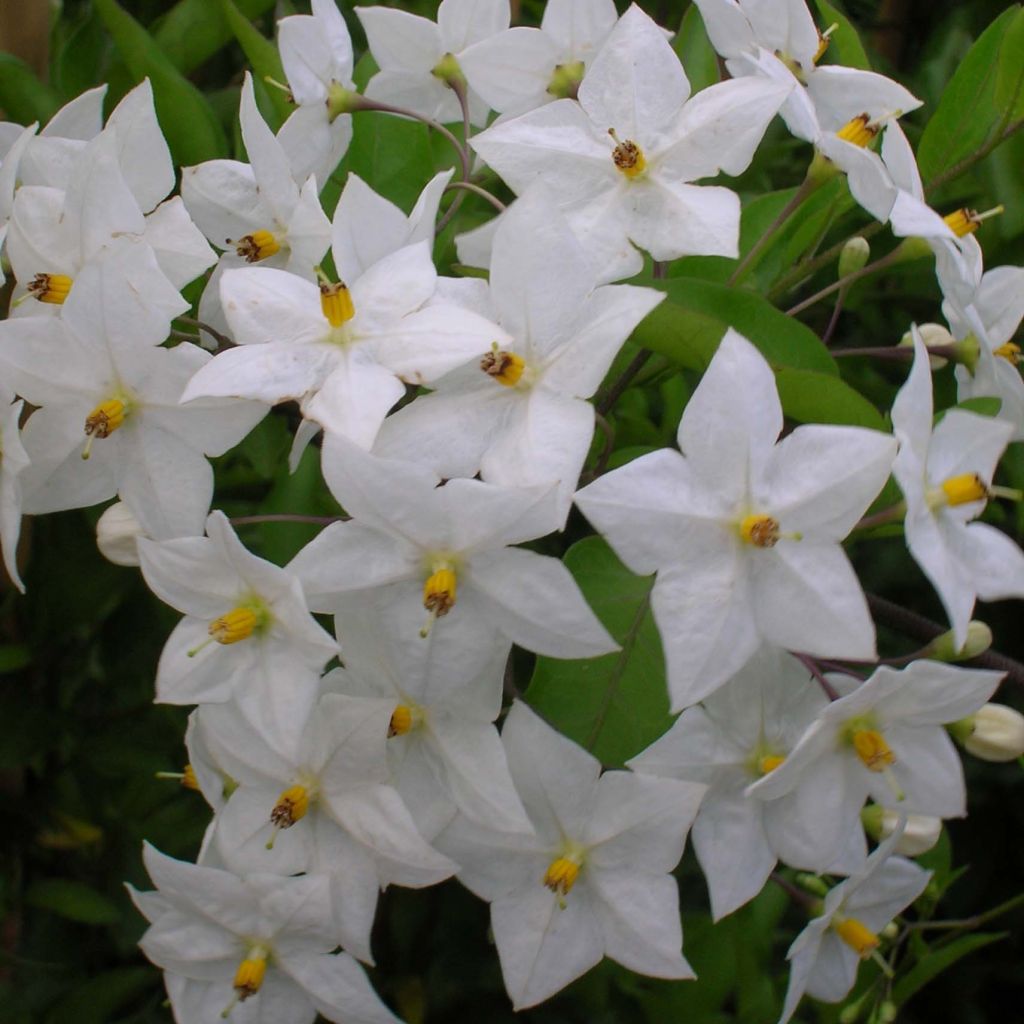

Solanum jasminoides Album
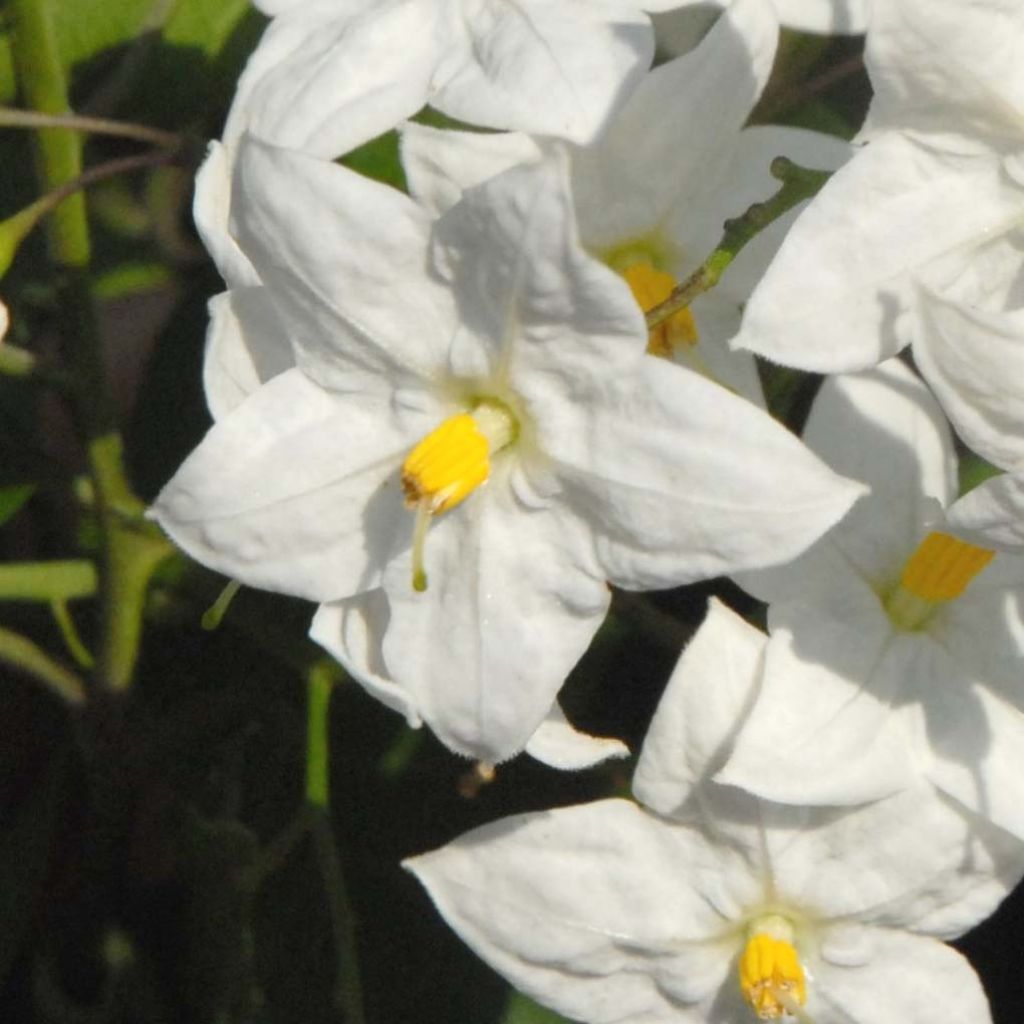

Solanum jasminoides Album
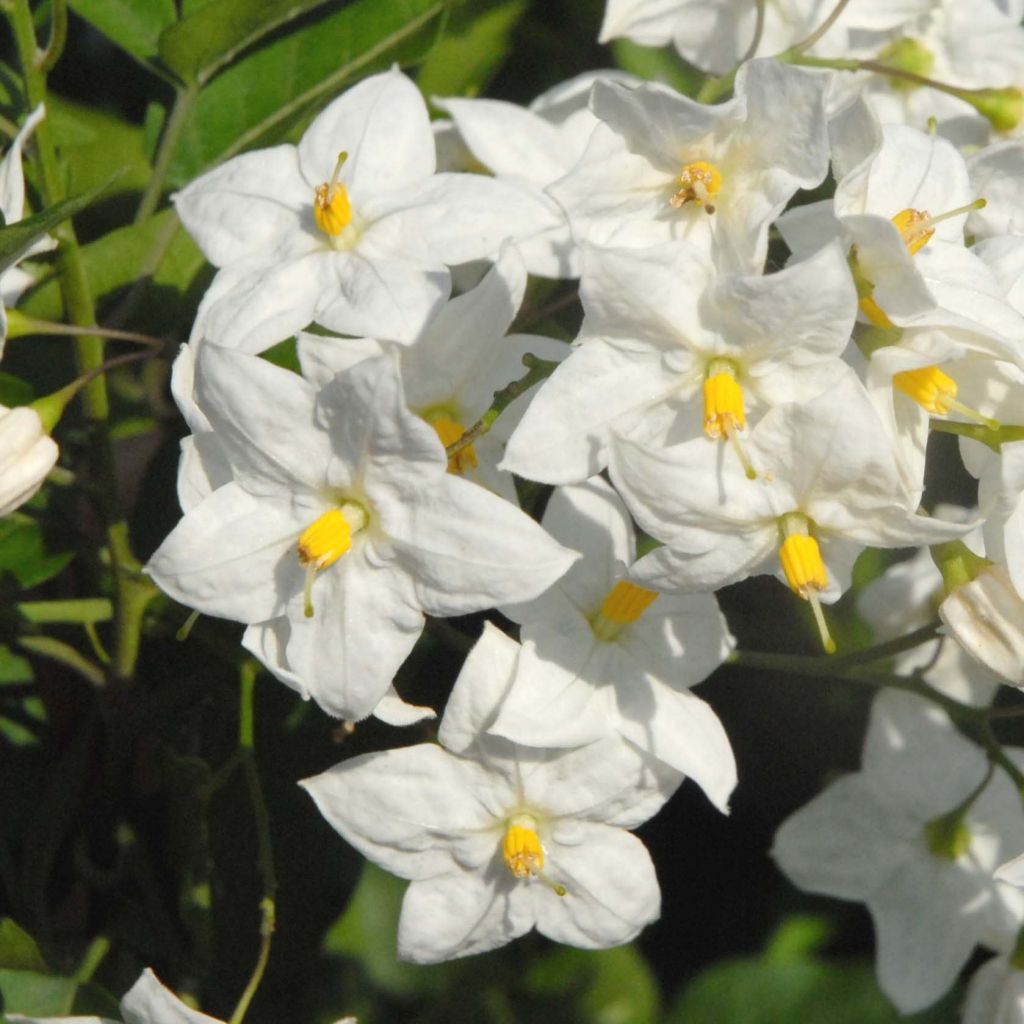

Solanum jasminoides Album
Solanum jasminoides Album
Solanum jasminoides Album
Potato Vine, Jasmine Nightshade
This item cannot be shipped to the selected country
Oversize package delivery charge from €6.90
More information
Schedule delivery date,
and select date in basket
This plant carries a 6 months recovery warranty
More information
We guarantee the quality of our plants for a full growing cycle, and will replace at our expense any plant that fails to recover under normal climatic and planting conditions.
Oversize package: home delivery by special carrier from €6.90 per order..
Express home delivery from €8.90.

Does this plant fit my garden?
Set up your Plantfit profile →
Description
The Solanum jasminoides 'Album' is the white-flowered form of the False Jasmine, equally decorative if not more so than the type, with flowers of a white-blue color. It is a graceful climbing plant, both light and of quite exceptional generosity. It forms numerous clusters of small pure white star-shaped flowers, slightly fragrant, which bloom from June until the first frost. They blossom on elegant foliage that somewhat resembles that of jasmine, evergreen in mild climates. This pretty vine is very often found in gardens in the Midi region where it thrives in the heat, intense sunshine, early spring, and never-ending late season. With a very accommodating temperament, its only weakness is its limited hardiness. Gardeners in more continental climates will easily adopt it in a large pot to be stored away for the winter.
The Solanum jasminoides, recently renamed Solanum laxum, is a climbing vine-plant in the Solanaceae family, just like the potato and the Datura. It is native to tropical and subtropical regions of South America, specifically southern Brazil and Ecuador, contrary to what its beautiful name Star of Bethlehem suggests. More hardy than it may seem, a well-established plant will regrow from the stump after short freezes of around -12°C (10.4°F).
Its growth is so rapid that the plant, once well-established, can reach its adult size in one or two seasons. When grown in our climates, it will reach an average height of 5m (16ft) with a 1m (3ft) spread. Its voluble woody climbing stems wrap around the support provided to them, as well as anything within their reach, and can cling to the rough surfaces of walls. They bear evergreen to semi-evergreen foliage depending on the severity of winter. The leaves are single, ovate to lanceolate, measuring 3 to 6 cm (1 to 2in) in length and 2 to 3 cm (1in) in width. Dark green in color, they turn red in cold weather and are not damaged by snow. Flowering occurs from May-June to October-November, sometimes lasting for 8 months in regions spared from frost. The inflorescences are small paniculate clusters bearing very bright 2cm (1in) diameter star-shaped flowers, composed of 5 white petals surrounding a center of thick bright yellow stamens. They are slightly fragrant and give rise to small violet berries measuring 5mm (0in) in diameter, toxic like all fruits of the Solanaceae family.
The Solanum jasminoides Album is appreciated for its rapid growth and endless aerial flowering, easy to associate with a variety of climbing plants, in a hedge or on a wire fence: clematis such as C.viticella Julia Correvon, Jasmine officinalis, Trachelospermum jasminoides, Cape honeysuckle, or Podranea ricasoliana in mild climates will accompany it on a trellis or fence. It is necessary to train it, otherwise it may form a large bush that is somewhat tangled and difficult to control. Note that this lovely vine can become invasive in suitable climates. It is a perfect plant for seaside gardens. It is resistant to summer drought: a few generous but spaced waterings during the summer will support its flowering. Growing it in a large pot presents no difficulty, provided there are regular waterings and fertilization with... tomato fertilizer. In cold climates, shelter your potted plant in a lightly heated veranda or in a cold greenhouse during winter.
Report an error about the product description
Solanum jasminoides Album in pictures


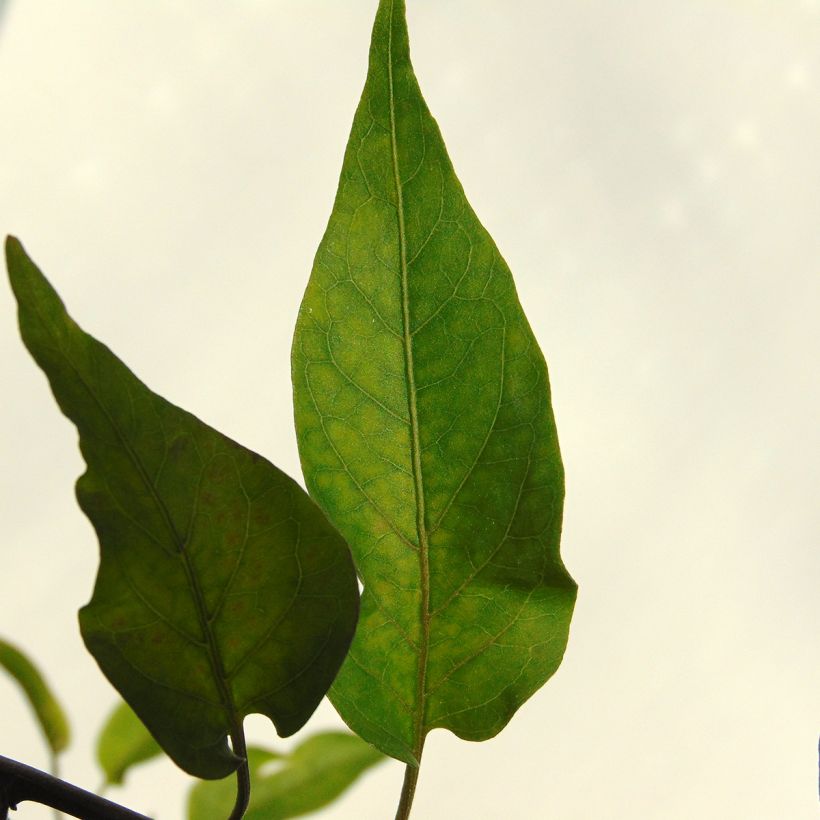

Plant habit
Flowering
Foliage
Botanical data
Solanum
jasminoides
Album
Solanaceae
Potato Vine, Jasmine Nightshade
South America
Other Climbers A to Z
Planting and care
You can plant your Solanum in open ground or in pots placed in a sunny position. These plants, known to be not very hardy, can nevertheless thrive as far as the Paris region, in a very sheltered situation. If you plant them in open ground, wait until the strong frosts have passed (they tolerate not too severe frost, not falling below -8°C). In the meantime, you can pre-cultivate them in pots in a warm and bright place to accelerate their growth. Plant your Solanum in a sunny location. These lianas need well-drained soil, rather dry, and appreciate a supply of organic fertilizer at planting, and regularly during growth in poor soil. In open ground, they only require occasional watering in summer to support flowering. Solanum jasminoides is not demanding in terms of soil type, and rather tolerates the presence of limestone. However, it prefers fertile and deep soils. In pots, it needs to be regularly watered and benefit from frequent fertilizer application. Provide it with a support to cling to (trellis, lattice, wire...), of sufficient size to accompany its rapid growth. On a wall without roughness, trellising is necessary. Attach hooks to the wall and stretch nylon wires horizontally, every 50 cm (20in), on which you will guide the stems. You can also let it grow freely: it will form a large, bushy ground cover in a somewhat wild area of the garden. In slightly colder regions, take care to protect the stump and base of the plant with a thick mulch and a winter cover.
In late winter, if the stems have been affected by frost, prune them to 30 cm (12in) from the ground: new stems will emerge from the stump. Regular pruning throughout the year is necessary to maintain a well-ordered appearance for your Solanum.
Diseases and pests: no known pathogens or pests in our climate, except for red spiders that can develop in warm and dry, poorly ventilated conditions.
Multiplication: by cuttings of herbaceous, flexible and green stems, not flowering, in summer.
Planting period
Intended location
Care
-
, onOrder confirmed
Reply from on Promesse de fleurs
Summer flowering climbers
Haven't found what you were looking for?
Hardiness is the lowest winter temperature a plant can endure without suffering serious damage or even dying. However, hardiness is affected by location (a sheltered area, such as a patio), protection (winter cover) and soil type (hardiness is improved by well-drained soil).

Photo Sharing Terms & Conditions
In order to encourage gardeners to interact and share their experiences, Promesse de fleurs offers various media enabling content to be uploaded onto its Site - in particular via the ‘Photo sharing’ module.
The User agrees to refrain from:
- Posting any content that is illegal, prejudicial, insulting, racist, inciteful to hatred, revisionist, contrary to public decency, that infringes on privacy or on the privacy rights of third parties, in particular the publicity rights of persons and goods, intellectual property rights, or the right to privacy.
- Submitting content on behalf of a third party;
- Impersonate the identity of a third party and/or publish any personal information about a third party;
In general, the User undertakes to refrain from any unethical behaviour.
All Content (in particular text, comments, files, images, photos, videos, creative works, etc.), which may be subject to property or intellectual property rights, image or other private rights, shall remain the property of the User, subject to the limited rights granted by the terms of the licence granted by Promesse de fleurs as stated below. Users are at liberty to publish or not to publish such Content on the Site, notably via the ‘Photo Sharing’ facility, and accept that this Content shall be made public and freely accessible, notably on the Internet.
Users further acknowledge, undertake to have ,and guarantee that they hold all necessary rights and permissions to publish such material on the Site, in particular with regard to the legislation in force pertaining to any privacy, property, intellectual property, image, or contractual rights, or rights of any other nature. By publishing such Content on the Site, Users acknowledge accepting full liability as publishers of the Content within the meaning of the law, and grant Promesse de fleurs, free of charge, an inclusive, worldwide licence for the said Content for the entire duration of its publication, including all reproduction, representation, up/downloading, displaying, performing, transmission, and storage rights.
Users also grant permission for their name to be linked to the Content and accept that this link may not always be made available.
By engaging in posting material, Users consent to their Content becoming automatically accessible on the Internet, in particular on other sites and/or blogs and/or web pages of the Promesse de fleurs site, including in particular social pages and the Promesse de fleurs catalogue.
Users may secure the removal of entrusted content free of charge by issuing a simple request via our contact form.
The flowering period indicated on our website applies to countries and regions located in USDA zone 8 (France, the United Kingdom, Ireland, the Netherlands, etc.)
It will vary according to where you live:
- In zones 9 to 10 (Italy, Spain, Greece, etc.), flowering will occur about 2 to 4 weeks earlier.
- In zones 6 to 7 (Germany, Poland, Slovenia, and lower mountainous regions), flowering will be delayed by 2 to 3 weeks.
- In zone 5 (Central Europe, Scandinavia), blooming will be delayed by 3 to 5 weeks.
In temperate climates, pruning of spring-flowering shrubs (forsythia, spireas, etc.) should be done just after flowering.
Pruning of summer-flowering shrubs (Indian Lilac, Perovskia, etc.) can be done in winter or spring.
In cold regions as well as with frost-sensitive plants, avoid pruning too early when severe frosts may still occur.
The planting period indicated on our website applies to countries and regions located in USDA zone 8 (France, United Kingdom, Ireland, Netherlands).
It will vary according to where you live:
- In Mediterranean zones (Marseille, Madrid, Milan, etc.), autumn and winter are the best planting periods.
- In continental zones (Strasbourg, Munich, Vienna, etc.), delay planting by 2 to 3 weeks in spring and bring it forward by 2 to 4 weeks in autumn.
- In mountainous regions (the Alps, Pyrenees, Carpathians, etc.), it is best to plant in late spring (May-June) or late summer (August-September).
The harvesting period indicated on our website applies to countries and regions in USDA zone 8 (France, England, Ireland, the Netherlands).
In colder areas (Scandinavia, Poland, Austria...) fruit and vegetable harvests are likely to be delayed by 3-4 weeks.
In warmer areas (Italy, Spain, Greece, etc.), harvesting will probably take place earlier, depending on weather conditions.
The sowing periods indicated on our website apply to countries and regions within USDA Zone 8 (France, UK, Ireland, Netherlands).
In colder areas (Scandinavia, Poland, Austria...), delay any outdoor sowing by 3-4 weeks, or sow under glass.
In warmer climes (Italy, Spain, Greece, etc.), bring outdoor sowing forward by a few weeks.


































